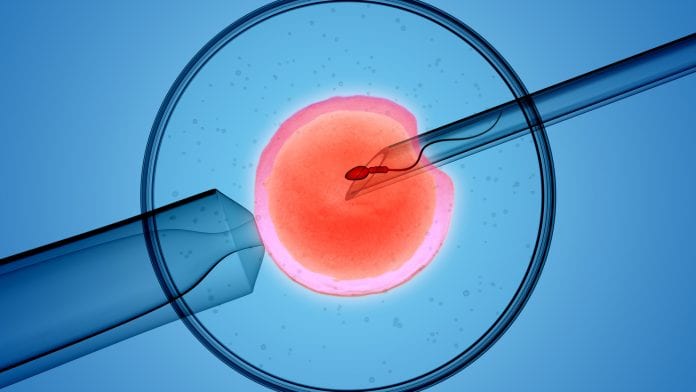Introduction
Infertility is a challenging issue that affects millions of individuals and couples worldwide. In recent years, there have been remarkable advancements in fertility technology, particularly in the field of in vitro fertilization (IVF). These innovations have not only improved the success rates of IVF but have also expanded the options available to those seeking to start or expand their families. This article explores the latest breakthroughs in IVF, shedding light on the cutting-edge technologies and techniques that offer new hope to individuals struggling with infertility.
- Preimplantation Genetic Testing
One of the most significant breakthroughs in IVF is the widespread use of preimplantation genetic testing (PGT). PGT is a set of techniques that enable the screening of embryos for genetic abnormalities before they are implanted in the uterus. There are three main types of PGT:
- PGT-A (Aneuploidy): PGT-A, formerly known as PGS (Preimplantation Genetic Screening), allows for the detection of chromosomal abnormalities in embryos. This technology improves the chances of selecting chromosomally normal embryos, reducing the risk of miscarriage and increasing the success rates of IVF.
- PGT-M (Monogenic Disorders): PGT-M is used to detect specific genetic mutations that can cause serious inherited diseases. This is especially valuable for couples with known genetic conditions in their families, as it allows them to select embryos free from these genetic abnormalities.
- PGT-SR (Structural Rearrangements): PGT-SR is employed when one or both partners have structural rearrangements in their chromosomes. It helps identify embryos that carry these structural abnormalities, reducing the risk of implanting embryos with significant genetic issues.
- Time-Lapse Imaging
Time-lapse imaging, often referred to as embryo monitoring, is a technology that involves taking continuous images of developing embryos. This innovation provides real-time data on embryo development and helps embryologists select the best embryos for transfer. By closely monitoring embryo growth and behavior, embryologists can make more informed decisions about the most viable embryos, ultimately increasing IVF success rates.
III. Artificial Intelligence (AI) in IVF
Artificial intelligence has made remarkable inroads into the field of IVF. AI algorithms can analyze vast amounts of data, including embryo images, to predict the likelihood of embryo implantation. These AI systems have been shown to enhance the accuracy of embryo selection, reducing the risk of transferring embryos with low implantation potential.
Additionally, AI is used to optimize the timing of embryo transfer, taking into account factors such as the patient’s hormone levels, endometrial receptivity, and embryo development. This personalized approach to embryo transfer timing can significantly improve the chances of a successful pregnancy.
- In Vitro Maturation (IVM)
In Vitro Maturation (IVM) is an exciting development in IVF that allows the retrieval and maturation of immature eggs. Traditional IVF requires eggs to be fully matured before fertilization, but IVM offers an alternative for women with certain medical conditions or those who do not respond well to conventional ovarian stimulation. IVM can expand the pool of available eggs for IVF, increasing the chances of success.
- Mitochondrial Replacement Therapy
Mitochondrial replacement therapy is an innovative technique that aims to prevent the transmission of mitochondrial diseases from mother to child. Mitochondria are the energy-producing organelles in cells and contain their own DNA. In cases where a woman has faulty mitochondria, she may pass on mitochondrial diseases to her offspring. This technique involves replacing the mitochondria in an egg or embryo with healthy mitochondria from a donor, thus ensuring that the child does not inherit mitochondrial disorders.
Mitochondrial replacement therapy is not without ethical and regulatory challenges, but it offers new hope for women at risk of passing on severe mitochondrial diseases to their children.
- Intra-Cytoplasmic Sperm Injection (ICSI)
Intra-Cytoplasmic Sperm Injection (ICSI) is a technique that has become a standard component of IVF procedures. It involves the injection of a single sperm directly into the egg’s cytoplasm. ICSI is particularly beneficial for couples dealing with male infertility issues, as it can overcome various sperm-related problems, such as low sperm count or poor sperm motility.
VII. Cryopreservation and Vitrification
Cryopreservation and vitrification have revolutionized the storage of embryos and eggs. Traditional slow-freezing methods can damage embryos and eggs, reducing their viability upon thawing. Vitrification, a rapid freezing technique, has significantly improved the survival rates of embryos and eggs. It allows for extended storage with minimal damage, providing greater flexibility and convenience for IVF procedures.
VIII. Single Embryo Transfer (SET)
Historically, multiple embryos were often transferred during IVF to maximize the chances of pregnancy. However, this practice carried the risk of multiple pregnancies, which can be associated with complications for both the mother and the babies. With advancements in IVF, there is a growing trend toward Single Embryo Transfer (SET). This approach involves transferring only one high-quality embryo, reducing the likelihood of multiple pregnancies while maintaining a good chance of successful pregnancy.
- Endometrial Receptivity Analysis
Endometrial receptivity analysis (ERA) is a diagnostic tool that helps determine the ideal window of time for embryo transfer. It involves sampling a woman’s endometrial lining to assess its receptivity to embryo implantation. By pinpointing the optimal time for embryo transfer, ERA can significantly improve IVF success rates and reduce the number of failed implantations.
- Ovarian Tissue Cryopreservation
Ovarian tissue cryopreservation is a fertility preservation technique primarily designed for cancer patients at risk of losing their fertility due to chemotherapy or radiation. It involves removing and freezing a portion of the woman’s ovarian tissue before cancer treatment. After cancer treatment, the tissue can be thawed and reimplanted to restore fertility. This breakthrough offers cancer patients the hope of future motherhood, even in the face of fertility-threatening treatments.
- Sperm and Egg Banking
Sperm and egg banking has become increasingly sophisticated, making it possible for individuals and couples to preserve their reproductive options. Advances in cryopreservation techniques and storage methods have extended the viability of banked sperm and eggs, allowing for their use in IVF or other assisted reproductive technologies years or even decades later.
XII. 3D Printing for Organ Transplantation
While not directly related to IVF, 3D printing technology is being explored to create artificial reproductive organs for individuals who are unable to conceive due to physical abnormalities. This breakthrough holds great potential for those with congenital or acquired conditions that affect their reproductive organs.
Conclusion
The field of IVF has seen remarkable innovations in recent years, offering new hope and possibilities to individuals and couples struggling with infertility. Preimplantation genetic testing, time-lapse imaging, artificial intelligence, in vitro maturation, mitochondrial replacement therapy, and other breakthroughs have revolutionized the IVF landscape, improving success rates and reducing the risks associated with the procedure.
These advancements are not only transforming the experience of IVF but also expanding the options available to those facing infertility, from personalized embryo selection to fertility preservation techniques. As technology continues to evolve, the future of fertility treatment promises even more exciting breakthroughs, ultimately providing greater opportunities for individuals to achieve their dreams of parenthood.


